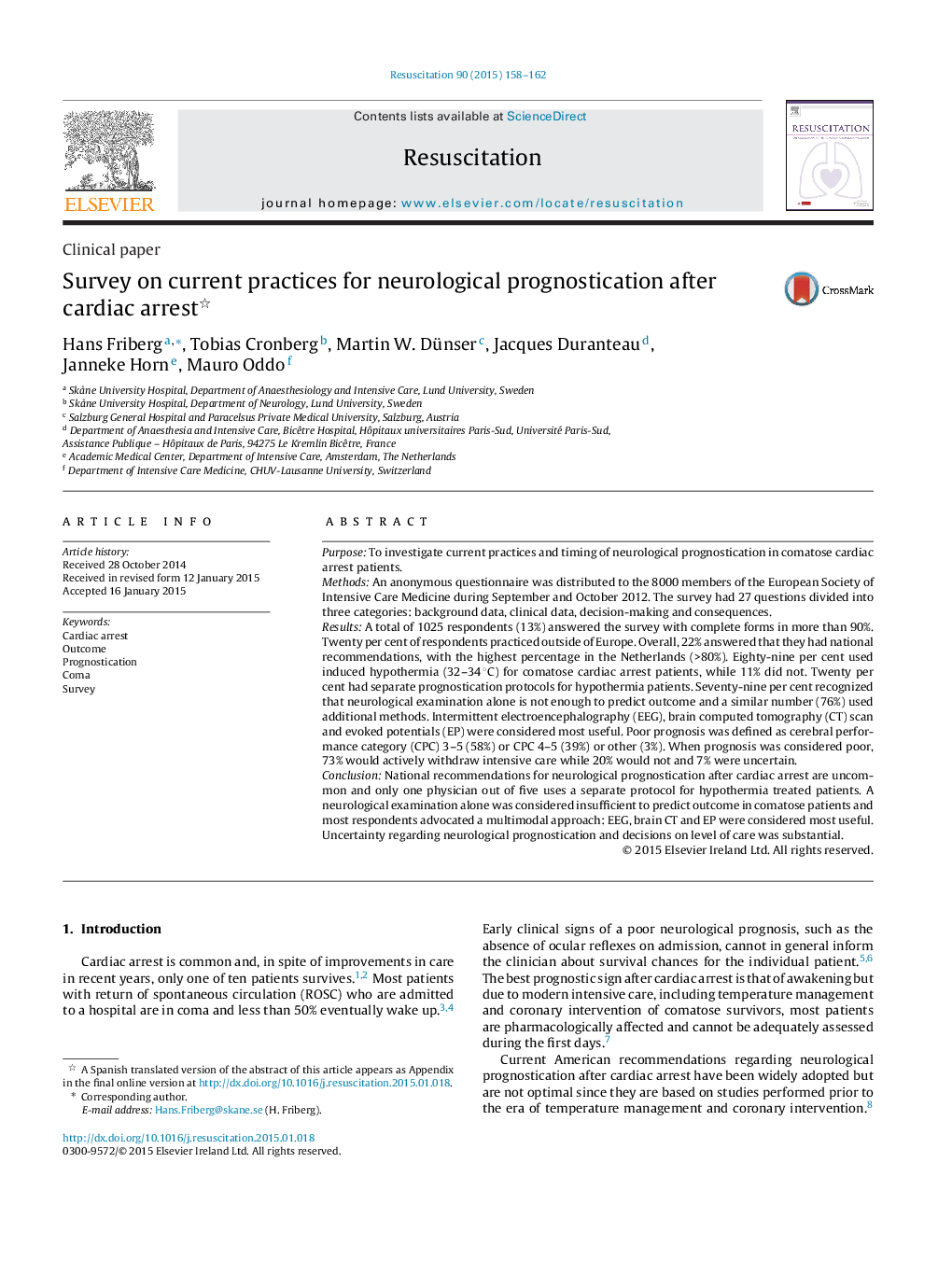| Article ID | Journal | Published Year | Pages | File Type |
|---|---|---|---|---|
| 3007948 | Resuscitation | 2015 | 5 Pages |
PurposeTo investigate current practices and timing of neurological prognostication in comatose cardiac arrest patients.MethodsAn anonymous questionnaire was distributed to the 8000 members of the European Society of Intensive Care Medicine during September and October 2012. The survey had 27 questions divided into three categories: background data, clinical data, decision-making and consequences.ResultsA total of 1025 respondents (13%) answered the survey with complete forms in more than 90%. Twenty per cent of respondents practiced outside of Europe. Overall, 22% answered that they had national recommendations, with the highest percentage in the Netherlands (>80%). Eighty-nine per cent used induced hypothermia (32–34 °C) for comatose cardiac arrest patients, while 11% did not. Twenty per cent had separate prognostication protocols for hypothermia patients. Seventy-nine per cent recognized that neurological examination alone is not enough to predict outcome and a similar number (76%) used additional methods. Intermittent electroencephalography (EEG), brain computed tomography (CT) scan and evoked potentials (EP) were considered most useful. Poor prognosis was defined as cerebral performance category (CPC) 3–5 (58%) or CPC 4–5 (39%) or other (3%). When prognosis was considered poor, 73% would actively withdraw intensive care while 20% would not and 7% were uncertain.ConclusionNational recommendations for neurological prognostication after cardiac arrest are uncommon and only one physician out of five uses a separate protocol for hypothermia treated patients. A neurological examination alone was considered insufficient to predict outcome in comatose patients and most respondents advocated a multimodal approach: EEG, brain CT and EP were considered most useful. Uncertainty regarding neurological prognostication and decisions on level of care was substantial.
